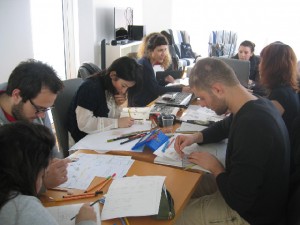 Architecturally excellent, the following five projects are also deemed by His Highness Aga Khan to be the most likely to improve quality of life for Muslims throughout the world.
Architecturally excellent, the following five projects are also deemed by His Highness Aga Khan to be the most likely to improve quality of life for Muslims throughout the world.
The Aga Khan Award for Architecture was established in 1977. Every three years since then, His Highness Aga Khan, the Imam of the Shia Imami Ismaili Muslims, has recognized everyone involved with the process of creating projects that aspire to be architecturally, culturally, and spiritually fabulous. All of this year’s 401 nominees (in accordance with competition rules) hailed from regions that have a strong Muslim presence.
Five winners selected from a shortlist of 19 received their awards this evening at a glamorous ceremony in Doha, Qatar, attended by the Emir of Qatar, Sheikh Hamad bin Khalifa Al Thani, Sheikha Moza bint Nasser, and the Aga Khan. First place went to the Bridge School project by Xiaodong Atelier, which closed the gap between two parts of a village in Xianshi, China, becoming the village’s cultural and spiritual focus.
First place: Bridge School Xiashi, China. By Li Xiaodong Atelier:
“The result is a project that has successfully invigorated the entire community, encapsulating social sustainability through architectural intervention.”
Second Place: Madinat Al-Zahra Museum in Cordoba, Spain. By Sobejano Architects S.L.P., Fuensanto Nieto and Enrique Sobejano.
“A refined and subtle design by the architectural firm Nieto Sobejano, the museum complex blends seamlessly into the site and the surrounding farmland – a series of rectangles composed of walls, patios and plantings which, taken together, seem more like a landscape than a building.”
Third Place: Ipekyol Textile Factory in Edirne, Turkey. By Emre Arolat Architects.
“The glazed southern facade, five internal courtyards, as well as gardens and light wells give each user access to natural light and views of nature, and the spaces also provide recreational areas for the workers.”
Fourth Place: Wadi Hanifa Wetlands in Riyadh, Saudi Arabia. By Moriyama and Teshima Planners Limited/Buro Happold.
“In an effort to redress the balance between the resources of the wadi and the people living around it, the Arriyadh Development Authority has implemented a comprehensive development strategy, a programme of works that aims to restore and develop Wadi Hanifa as an environmental, recreational and tourism resource.”
Fifth Place: Revitalization of the recent heritage of Tunis, Tunisia (an urban revitalization effort that restored public spaces and landmark buildings.) By Association de Sauvegarde de la Medina de Tunis.
“The urban revitalisation plan, devised and spearheaded by the Association de Sauvegarde de la Médina de Tunis (ASM), has restructured the public spaces of the area around Avenue Bourguiba and Avenue de France and made them chiefly pedestrian.”
For more information about winners and shortlisted projects, please visit the official website for the Aga Khan Award for Architecture website.
All images courtesy of AGAA
More on Aga Khan Projects:








